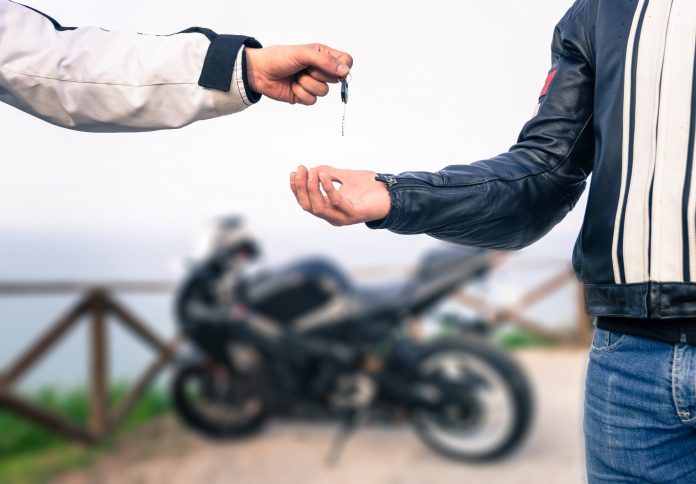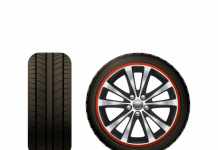Choosing a used motorcycle is always an adventure. Surprises can occur even if you buy a used car from an authorized dealer, for example – put in a trade-in by the former owner. That is why it is necessary to inspect the two-wheeled “second-hand” when buying with special care. We have collected 10 tips from experienced motorcyclists detailing where to look when choosing a motorcycle in the secondary market.
It should be noted that this is generalized information on the topic of choice, therefore it is worth studying the thematic forums and communities devoted to the devices of interest to you, to find out what problems are typical for this particular model, and also to get a service manual. Nevertheless, even guided by general theoretical knowledge alone, the risk of buying a problem bike is greatly reduced checkout these ones. Buy a used motorcycle: 10 tips on inspection-
1. Choose among several offers
Having selected the options you are interested in – ring the owners, check the availability of documents and the possibility of bidding. Specify the reason for the sale – sometimes for urgency you can get an additional discount. And sometimes the urgency and the possibility of a discount (especially large) is a reason to think – they won’t give a big discount on a good motorcycle. Most likely, low cost hides legal or technical problems.
2. Do not consider devices with a clearly lower price tag
There may be more problems with such a purchase than the imaginary benefit. Often it’s a restored technique or “backdoors” – motorcycles without documents, most likely stolen or imported into the country illegally. In both cases, the joy of the purchase will be short-lived – if you try to register the motorcycle with the traffic police, the equipment may be arrested.
3. Check with the seller for details of operation.
You can ask to send additional photos of the main units of the motorcycle through social networks. Owner profile will help to indirectly assess the operating conditions and contents of the bike. You can also search for the owner’s account on specialized forums and motorcycle sites. A motorcycle used for training, training or racing is not the best choice among the variety of used markets.
4. Check motorcycle for theft / prohibition of use
Use the traffic police website and the Carfax service or AutoCode to check the history of the motorcycle and the possible prohibition of registration actions. The autocode works mainly in Moscow, although sometimes it can be used to “break through” a motorcycle across regions.
5. Inspect the storage location.
Find out where the bike was during the motorcycle season, whether the motorcycle was mothballed at the end of summer, and check storage conditions in winter. Prefer warm garage storage with proper preservation – this will help to avoid rust, “shriveled” rubber parts and other problems associated with long-term parking on the street.
It is worth noting that many motor showrooms selling used equipment pay more attention to eliminating minor visual flaws and polishing the motorcycle to shine than to real technical preparation of the bike.
6. Make sure that it’s the bike from the ad
Often, sellers of used equipment place deliberately non-existent lots at an attractive price, and upon arrival it is discovered that only less-demanded vehicles remained. Reviews about sellers-legal entities (if this is a serious dealer of used equipment) can be easily found on the Internet – the larger and older the motorcycle show, the more information about it on the network. You can also search for the device on other bulletin boards, including by means of image search.
7. Check for a complete package of documents
Absolutely any equipment with an engine capacity of more than 50 cm 3 must have the original PTS (technical passport), sales contracts with the previous owners (if any) and a customs declaration (state customs declaration), if the bike was only imported into the Russian Federation and has not yet been registered. If the motorcycle is registered in accordance with the established procedure, the STS is issued in the STSI – the vehicle registration certificate and license plate.
8. Reconcile motorcycle license plates
On most motorcycles, the VIN number is located on the frame (steering column) in the area of the right feather pen. Make sure that there are no traces of etching and welding on it, and that all the characters are clearly legible – if there is a suspicion of “interruption,” the traffic police inspector has the right to evacuate the motorcycle to the parking lot for a technological examination. If you have bought custom number plate for bike make sure it abides by the rules of DVLA or your local authorities.
Do not be surprised at the possible lack of information about the engine number – recently, these data are indicated only in the TCP. If the engine number indicated in the TCP is different from the real one, then the motor was changed due to a breakdown or accident.
If the replaced power unit does not bother you, make sure that its model exactly matches the factory installed one. Otherwise, problems in the traffic police may be waiting for you, since replacing the engine with another one is considered to be a design change and requires complex certification.
9. Evaluate mileage compliance with declared values
British scientists have found that the average Moscow motorcyclist rides 7-10 thousand kilometers per season. Thus, statistically, even for a three-year-old bike, the approximate mileage is usually 20-30 000 km, which allows you to approximately correlate the age of the motorcycle with the declared mileage. On some tidy odometer readings do not even need to twist.
With a certain error, the lowered mileage can also be detected by the state of the controls (steering sticks, steps and levers) and cosmetic defects. Regardless of the careful operation, traces of equipment and baggage, worn handles and footboards will appear on the motorcycle. On frequent trips, this is unavoidable, however excessive wear or a recent replacement may indicate an unreliable mileage.
You should not completely exclude equipment with impressive numbers on the odometer from the sample – with competent after-sales service and a certain amount of luck, such a motorcycle will please you more than one season.
10. Inspect the frame for damage, cracks, or dressing marks.
There should be no cracks in the visible parts of the motorcycle frame, as well as signs of repair and painting. When inspecting, pay special attention to the weld points: factory welds always look even and neat. Inspect the frame in the area of the subframe and steering column for mechanical damage – this is where deformation most often occurs.



















